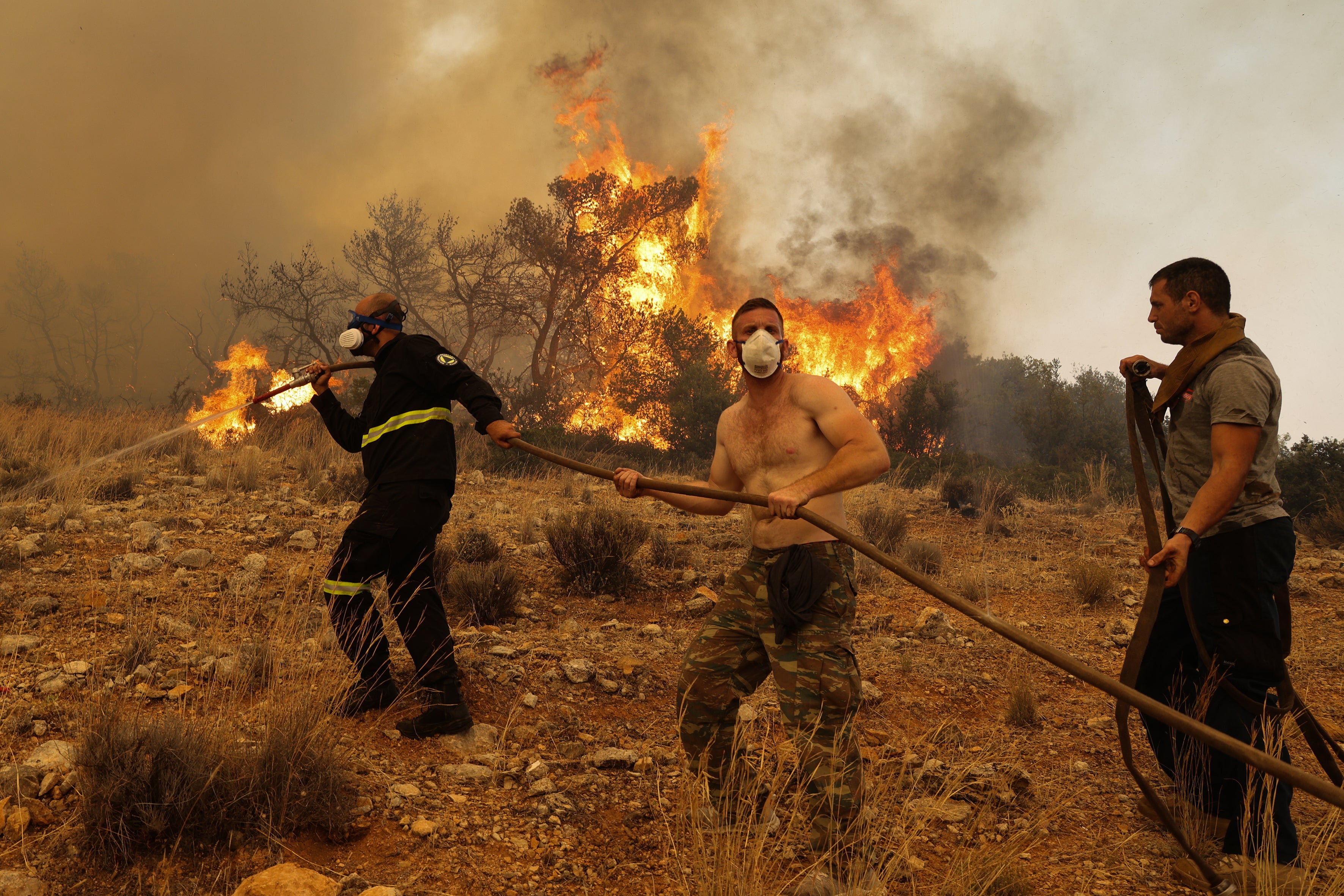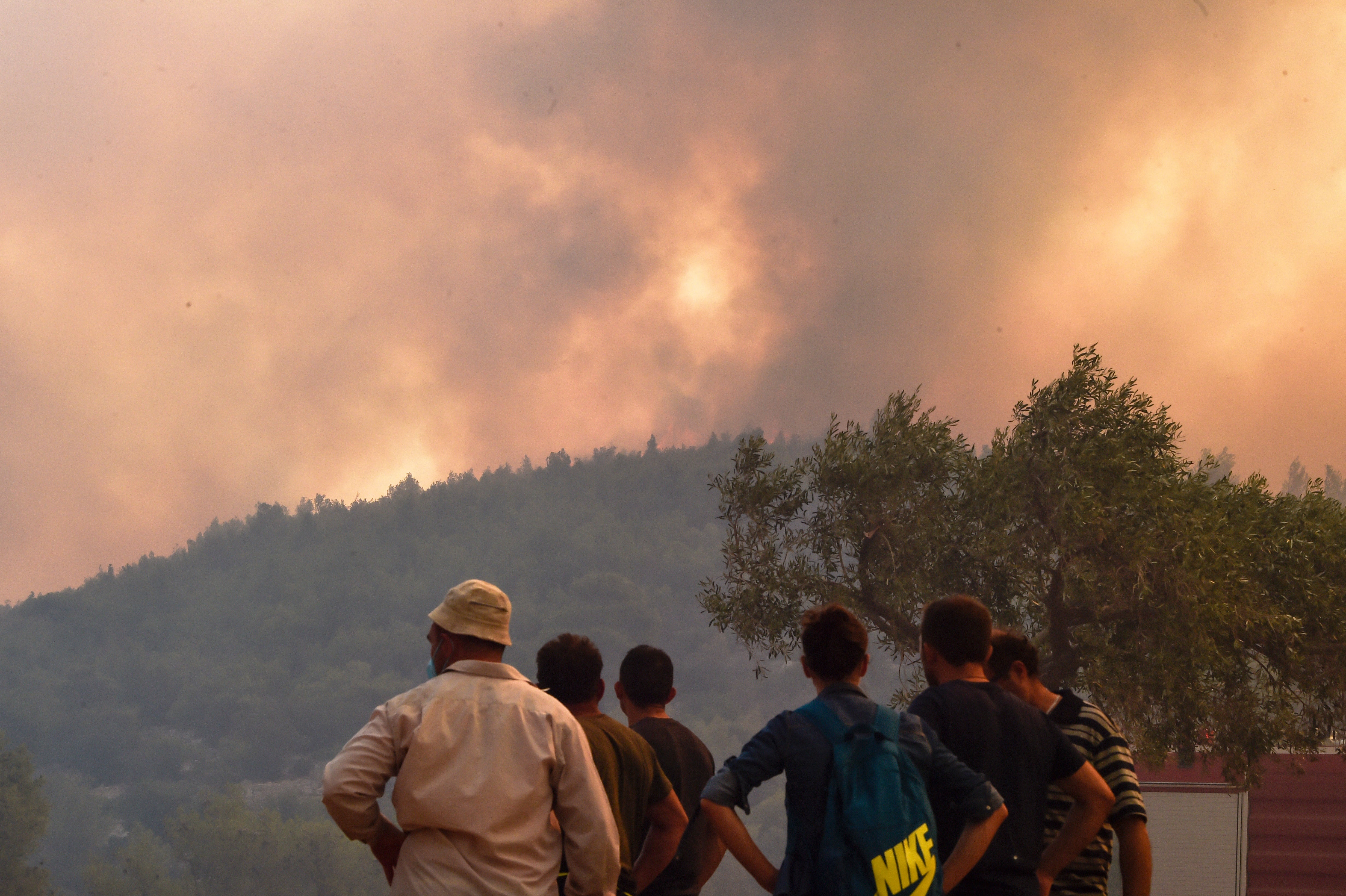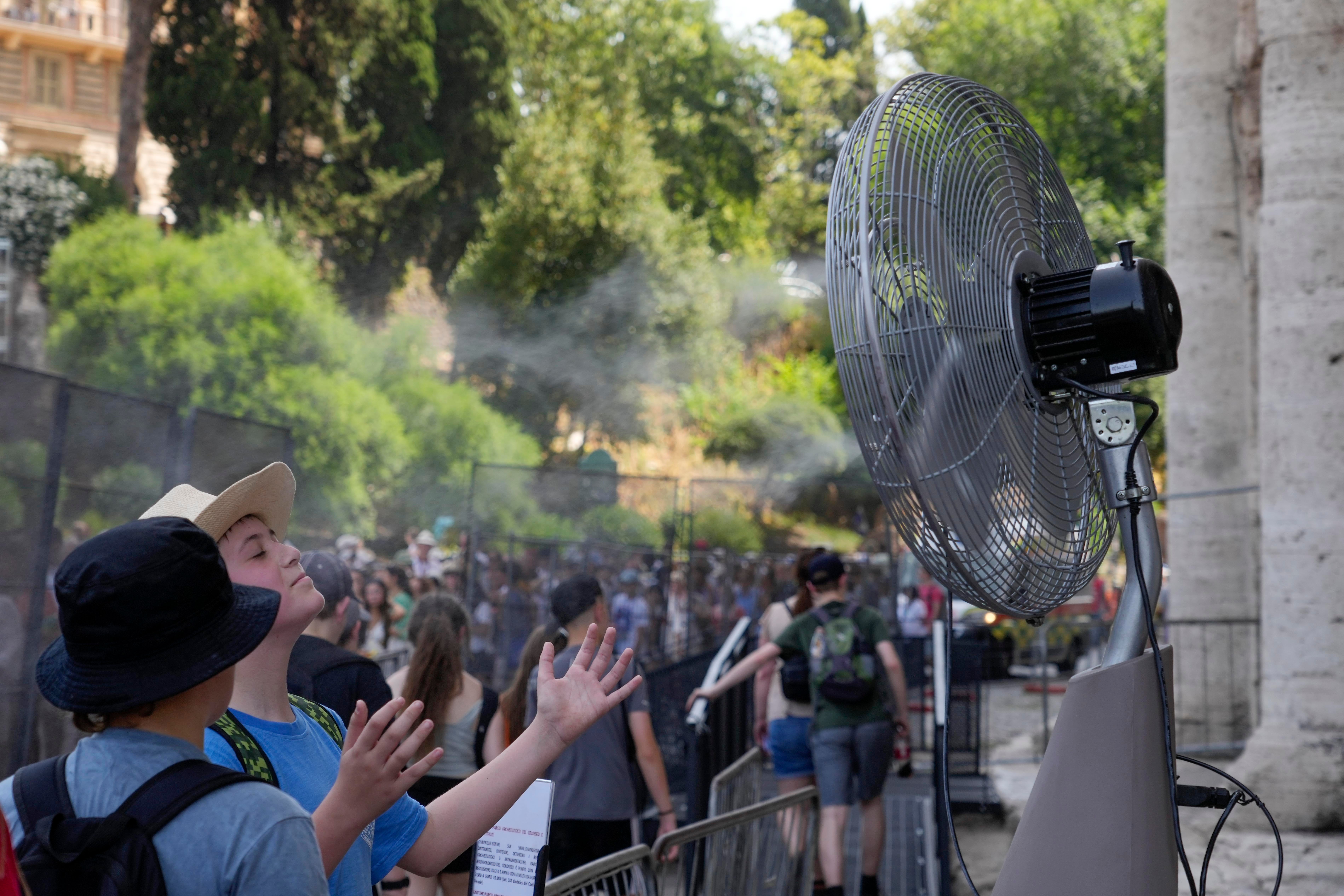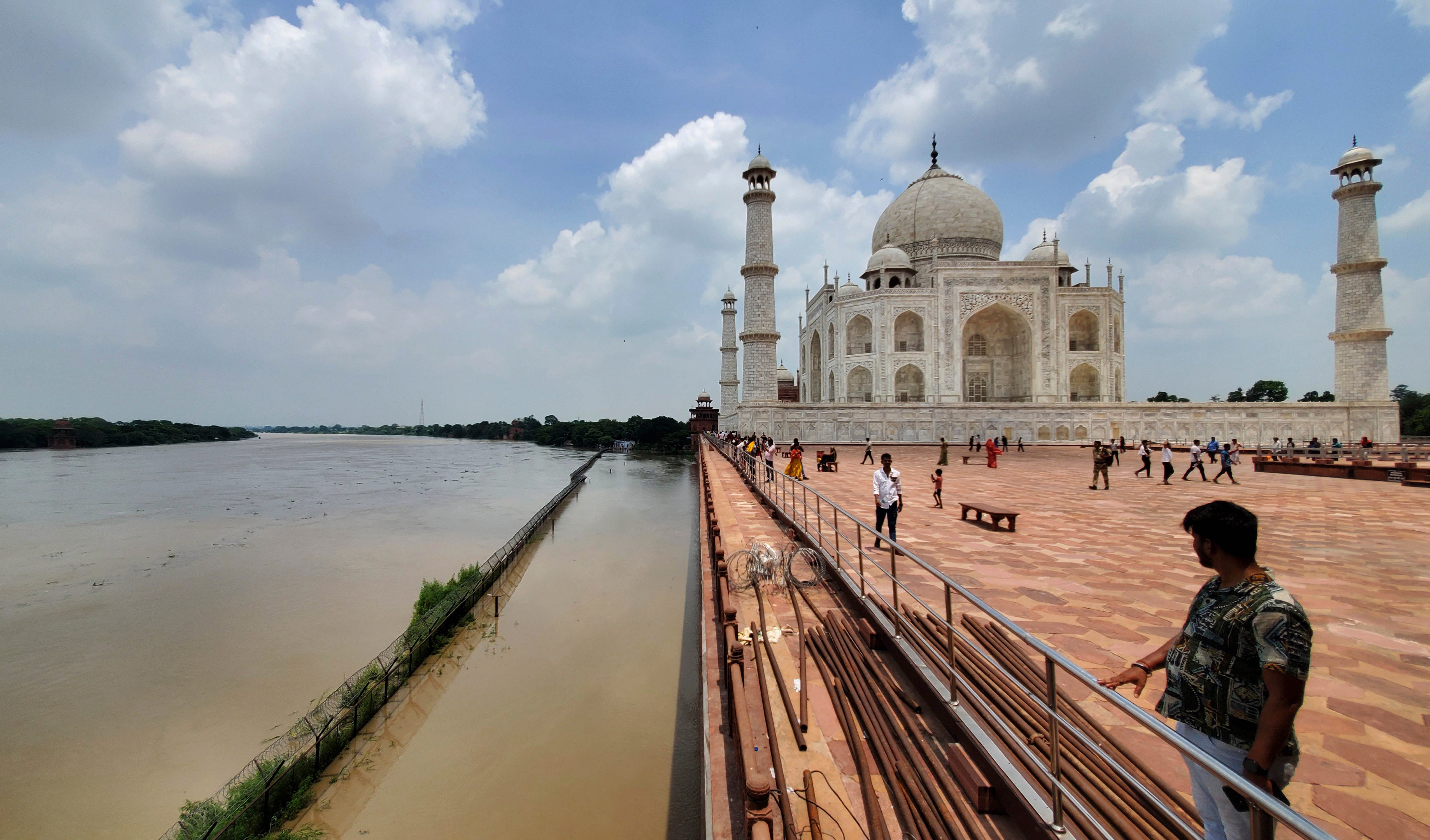Fires rage in Greece with another spike in temperatures expected
Parts of Italy see the thermometer hovering around 46C as Greek forecasters say the country will see more extreme heat on Thursday and Friday

Fires are raging across Greece destroying forests on Rhodes and gutting homes close to Athens as a new heatwave loomed and threatened to further stoke tinderbox conditions across the country.
Firefighters backed with air water bombers battled a resurgence of flames west of Athens, fresh evacuation orders were issued on Wednesday for three areas threatened by encroaching flames. On the island of Rhodes, authorities sent reinforcements to combat a fire which erupted in a densely wooded mountainous area and ordered the evacuation of three villages as a precaution.
Four aircraft sent from Italy and France joined firefighting efforts on Wednesday, authorities said. Firefighters across the country, boosted by crews from Romania, Poland and Slovakia, have been deployed to help battle the blazes.
Temperatures could climb to 43C on Thursday, forecasters said, as the fresh another bout of extreme temperatures begins. “Conditions are extreme, and are likely to be so for another week,” Kostas Tsigas, head of the fire brigade officers association, told Greece's SKAI TV.
Italy has put most of its major cities on red alert some areas hovering around 46C (114F) – as wildfires and flooding wreak havoc from the United States to China.
In China, which was hosting US climate envoy John Kerry for talks, tourists in the western Xinjiang province defied the heat to visit a giant thermometer attraction showing surface temperatures of 80C. In Beijing, which set a new record as temperatures remained above 35C for the 28th day in a row, Mr Kerry expressed hope that cooperation to combat global warming could redefine troubled ties between the two superpowers. The heatwaves that have scorched parts of Europe, Asia and the United States this week has thrown that challenge into sharp relief.

Back in Italy, the Lazio region – focused on Rome – said it had seen a 20 per cent increase in medical emergencies compared with the same time last year because of the heat.
Temperatures remained high across much of Italy on Wednesday, with 45C to 46C expected on the Mediterranean island of Sardinia.
The health ministry said it would activate an information hotline and teams of mobile health workers visited the elderly in Rome.
“These people are afraid they won't make it, they are afraid they can't go out,” said Claudio Consoli, a doctor and director of a health unit.
Carmaker Stellantis said it was monitoring the situation at its Pomigliano plant near Naples on Wednesday, after temporarily halting work on one production line the day before when temperatures peaked.

Workers at battery-maker Magneti Marelli threatened an eight-hour strike at their central Italian plant in Sulmona. A joint statement by the unions said “asphyxiating heat is putting at risk the lives of workers”.
In Germany, the heatwave sparked an unlikely discussion on whether workplaces should introduce siestas for workers.
“While the current heatwave is expected to last until around 26 July, another period of extreme temperatures may follow if the heat dome persists”, explained Florian Pappenberger, director of forecasts at the European Centre for Medium-Range Weather Forecasts (ECMWF)
In South Korea, heavy rain has pummelled central and southern regions since last week. Fourteen deaths occurred in an underpass in the city of Cheongju, where more than a dozen vehicles were swamped on Saturday when a river levee collapsed. In the southeastern province of North Gyeongsang, 22 people died, many from landslides and swirling torrents.
In northern India, flash floods, landslides and accidents related to heavy rainfall have killed more than 100 people since the onset of the monsoon season at the start of June. Rainfall is 41 per cent above average.
The Yamuna river reached the compound walls of the Taj Mahal in Agra for the first time in 45 years, submerging several other historical monuments, and flooded parts of the Indian capital.

The Brahmaputra river, which runs through India's Assam state, burst its banks this month, engulfing almost half of the Kaziranga National Park – home to the rare one-horned rhino – in waist-deep water.
A wall collapse from monsoon rains killed at least 11 construction workers in neighbouring Pakistan.
In recent days, parts of Asia, as well as Europe and the United States have shattered temperature records.
On Sunday, a remote township in the Turpan Depression registered a maximum air temperature of 52.2C, smashing China's national record of 50.3C set in 2015, also in the basin.
Extreme heat in parts of the world will likely be exacerbated by the return of the El Nino weather pattern in the tropical Pacific for the first time in seven years, which is expected to push up temperatures.
The unprecedented temperatures have added new urgency for nations around the globe to tackle the climate crisis. Mr Kerry told Chinese Vice-President Han Zheng on Wednesday that the problem is a “universal threat” that “requires the largest nations in the world, the largest economies in the world... to come together in order to do work not just for ourselves, but for all mankind”.
Reuters
Join our commenting forum
Join thought-provoking conversations, follow other Independent readers and see their replies
Comments
Bookmark popover
Removed from bookmarks